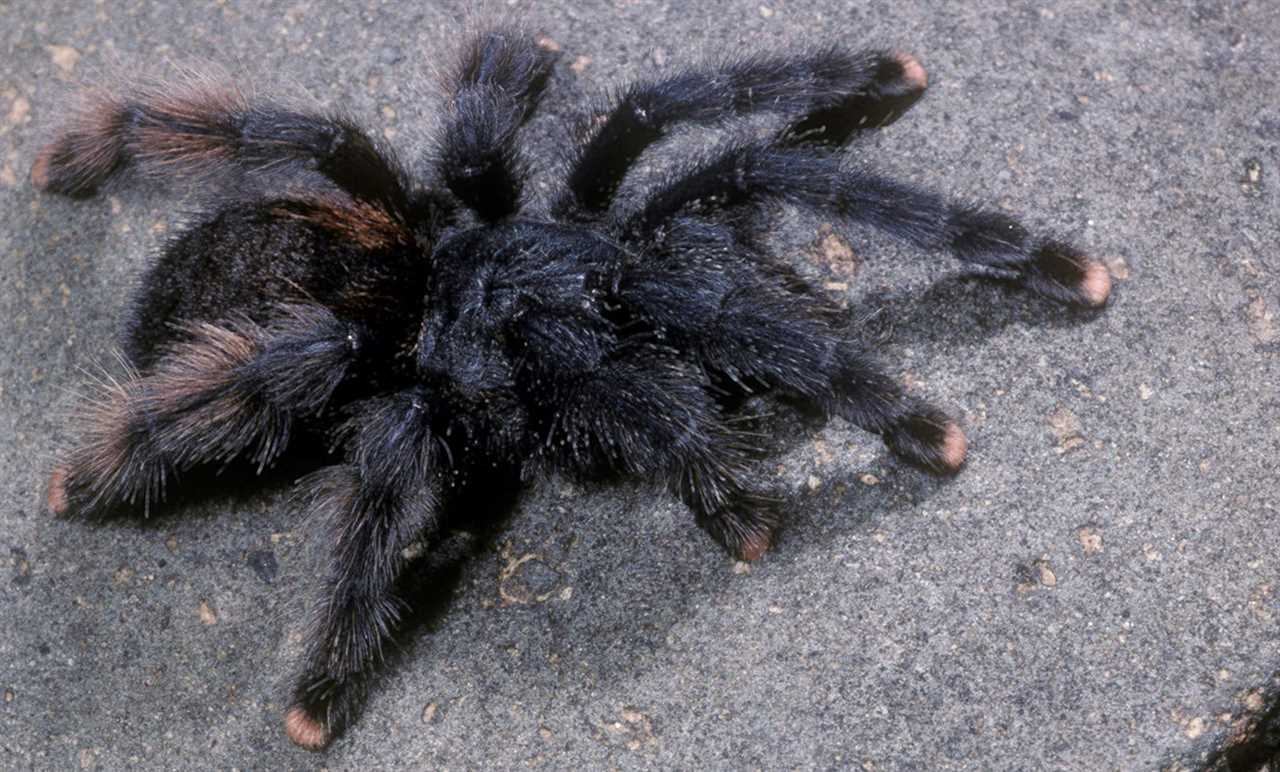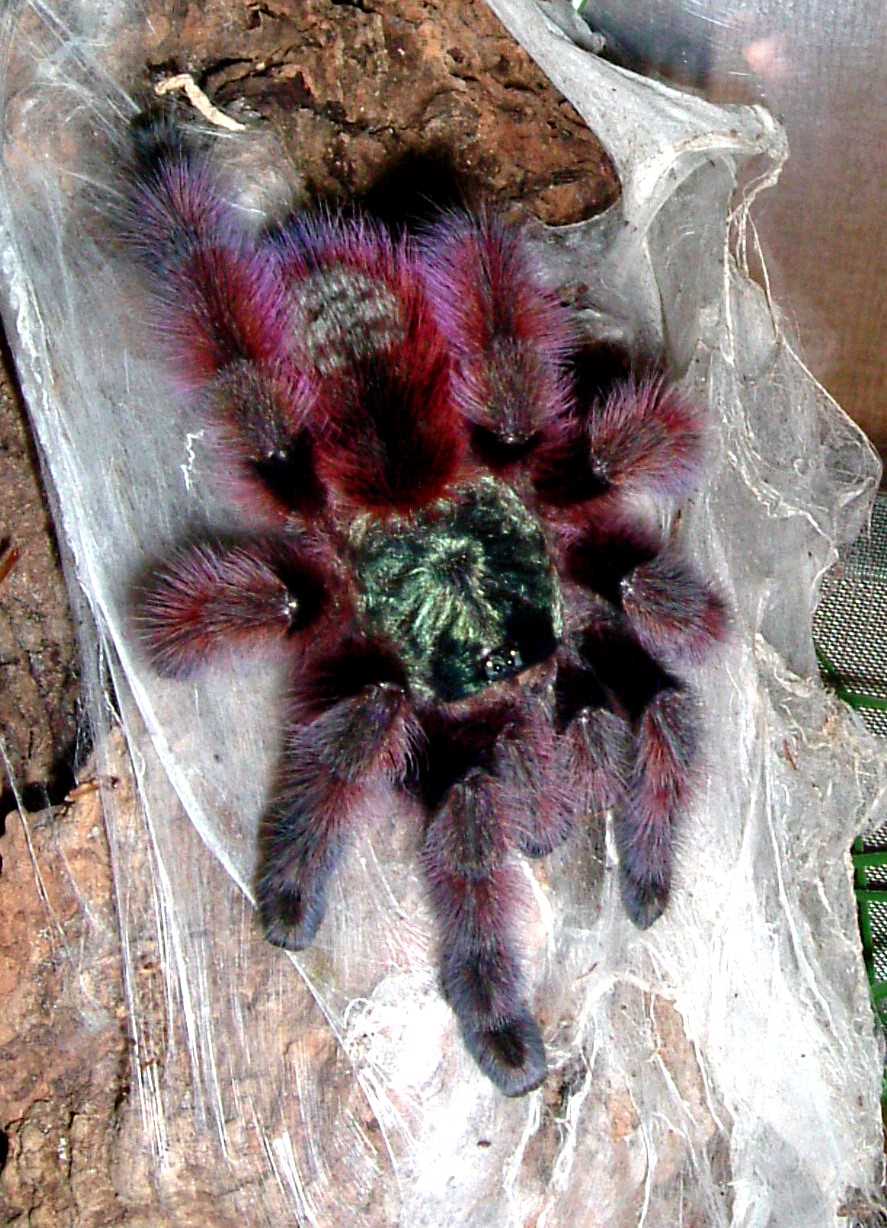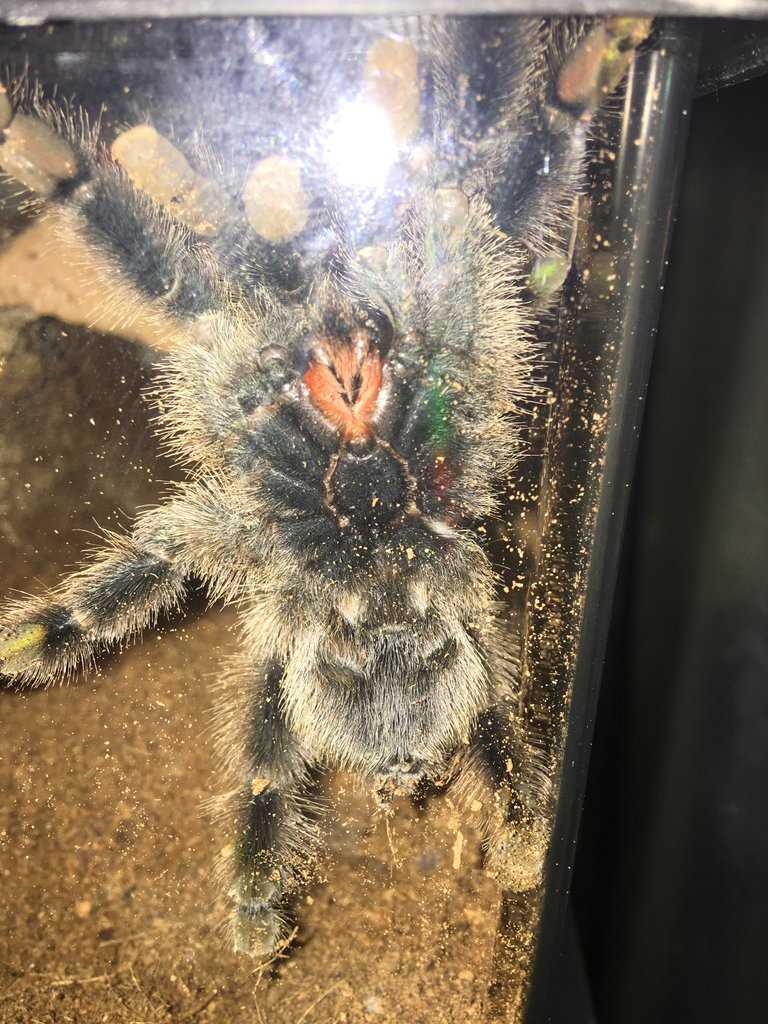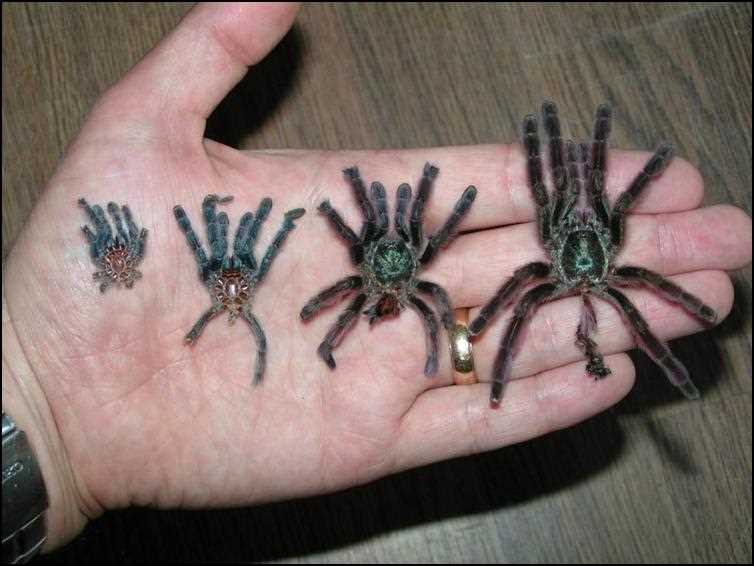
The pink toe tarantula is a fascinating arachnid species that is native to the rainforests of South America. While both males and females belong to the same species, there are distinct differences in their appearance and behavior.
The female pink toe tarantula is larger and more robust compared to the male. She possesses striking coloration, with a vibrant pink or reddish hue on her legs and abdomen, which gives her the common name “pink toe.” This coloration is thought to serve as a warning to potential predators, indicating her venomous nature. Additionally, females have longer lifespans than males, often living up to 15 years in captivity.
On the other hand, the male pink toe tarantula has a smaller and sleeker body. While still displaying some pink or reddish coloration on their legs, their overall appearance is less vibrant compared to the females. Males are also equipped with specialized pedipalps, which they use for mating. Interestingly, male pink toe tarantulas have a significantly shorter lifespan compared to females, typically only living up to 5-7 years.
Appearance
Coloration and Markings

One notable feature of the male Pink Toe Tarantula is its striking coloration. The body of this tarantula is covered in dense, soft hairs that give it a pinkish hue, hence its name. Additionally, these hairs, which are usually longer than those of the female, reflect light in a way that makes them appear metallic, displaying shades of blue, green, and purple.
Size and Structure
On average, adult male Pink Toe Tarantulas have a leg span of about 4 to 5 inches, making them smaller compared to their female counterparts. Their bodies are relatively slender and elongated, with a glossy appearance. The legs of the male Pink Toe Tarantula are thin and covered in fine hairs.
The head segment of this tarantula species is characterized by a pair of prominent chelicerae, which contain the spider’s fangs. These fangs are used both for feeding and self-defense.
Comparison of Size and Coloration in Male and Female Pink Toe Tarantulas
Female Pink Toe Tarantula
Female pink toe tarantulas are generally larger than their male counterparts. On average, females can reach a leg span of 5 to 6 inches, while males are typically smaller, with a leg span of 3 to 4 inches. This size difference is a common phenomenon in many tarantula species.
In terms of coloration, female pink toe tarantulas have a darker overall appearance. Their bodies are mostly dark brown or black, with patches of pink or reddish hair on their toes, hence the name “pink toe”. This coloration provides excellent camouflage in their natural habitat.
Male Pink Toe Tarantula
Male pink toe tarantulas, as mentioned earlier, are smaller in size compared to females. They have a leg span of 3 to 4 inches on average. The difference in size is thought to be related to the reproductive biology of the species.
Mating Rituals of Male and Female Pink Toe Tarantulas
Male and female Pink Toe Tarantulas have unique and fascinating mating rituals that are worth exploring. These ritualistic behaviors play a significant role in the reproductive success of these tarantulas.
1. Courtship Behavior
During the courtship process, the male Pink Toe Tarantula exhibits various behaviors to attract the attention of the female. These include leg tapping, vibrating its body, and parading around the female, all aimed at demonstrating its suitability as a mate.
2. Precopulatory Rituals
Once the female shows receptivity, the male Pink Toe Tarantula continues its courtship by engaging in precopulatory rituals. These rituals involve the male using specialized appendages called pedipalps to transfer sperm to the female.
3. Copulation
After the successful transfer of sperm, copulation takes place. The male positions itself on top of the female and inserts its pedipalps into the female’s genital opening. This process can last for several hours, during which the male ensures a complete transfer of sperm.
4. Post-copulatory Behavior
Once copulation is complete, the male Pink Toe Tarantula disengages from the female and may retreat to a safe distance. In some cases, the male may remain near the female to guard her against potential rivals. However, males of some species may become cannibalistic after mating, posing a risk to their own survival.
Conclusion
Spider Demeanor: A Comparison Between Male and Female Pink Toe Tarantulas

Males:
Male pink toe tarantulas, despite their vibrant coloration, tend to display a more timid and reclusive nature compared to their female counterparts. They typically spend a majority of their time hiding under foliage or within the crevices of their habitat, only venturing out when searching for a mate.
Females:
Female pink toe tarantulas, on the other hand, adopt a more stationary and defensive stance. They prefer to establish a secure web structure within their habitat, which serves as both a means of capturing prey and providing shelter.
Female pink toe tarantulas enjoy a longer lifespan, allowing them to invest more time and effort into reproductive activities.
Habitat Preferences
Male Pink Toe Tarantulas, on the other hand, are smaller and more slender. They have a body length of around 3-4 inches (8-10 cm) and a leg span of about 5-6 inches (12-15 cm). The males also have pink toes, but their coloration is generally less vibrant than that of the females.
The temperature and humidity levels within the enclosure are also crucial for the well-being of Pink Toe Tarantulas. They thrive in temperatures ranging from 75-85 degrees Fahrenheit (24-29 degrees Celsius) and a humidity level of around 70-80%. Providing a temperature gradient within the enclosure would allow the tarantula to regulate its body temperature according to its needs.
In their natural habitat, Pink Toe Tarantulas are often found in the dense foliage of tropical rainforests. They create silk-lined burrows within tree trunks or branches to provide a sense of security and protection. When setting up an enclosure for a Pink Toe Tarantula, it’s essential to provide hiding spots such as cork bark or hollow logs to mimic their natural habitat.
Overall, providing a suitable habitat for both male and female Pink Toe Tarantulas is essential for their well-being and longevity. By recreating their natural habitat within the enclosure, keepers can ensure that these fascinating tarantulas thrive in captivity.
Feeding Habits
The feeding habits of male and female pink toe tarantulas are interesting to observe. While both genders are carnivorous, their behaviors during feeding differ.
Male pink toe tarantulas:
Male pink toe tarantulas may also exhibit more aggressive feeding behavior. They can be territorial and may fight over food if kept in close proximity to other tarantulas.
Female pink toe tarantulas:
Once a female detects the vibrations of an insect caught in her web, she will approach it cautiously and slowly. She uses her venom to immobilize the prey before consuming it. This method of feeding allows the female tarantula to conserve energy and avoid unnecessary movement.
In general, female pink toe tarantulas exhibit a more calculated and patient feeding behavior compared to their male counterparts.
Defensive Mechanisms of Male and Female Pink Toe Tarantula
The pink toe tarantula is a unique and fascinating species known for its vibrant coloration and distinctive behavior. Both male and female pink toe tarantulas possess various defensive mechanisms that they use to protect themselves from potential threats. These mechanisms play a crucial role in their survival and are an essential part of their natural behavior.
Another defensive mechanism utilized by both male and female pink toe tarantulas involves their venomous bite. These tarantulas possess venom glands and fangs that they use to capture and subdue their prey. While their venom is not considered dangerous to humans, a bite can still cause localized pain and swelling.
Longevity and Lifespan
The Pink Toe Tarantula, known for its vibrant coloration and distinctive markings, is an intriguing species for arachnid enthusiasts. One aspect that captivates researchers and keepsers alike is their longevity and lifespan.
Life expectancy:
The lifespan of a Pink Toe Tarantula can vary depending on various factors such as gender, overall health, and environmental conditions. On average, males typically live for around 5 to 7 years, whereas females have a longer lifespan of 10 to 12 years. However, with proper care and ideal conditions, some individuals have been known to live even longer.
Factors affecting lifespan:
There are several key factors that can influence the longevity of Pink Toe Tarantulas:
1. Gender:
As mentioned earlier, male Pink Toe Tarantulas generally have a shorter lifespan compared to females. This is mainly due to the stress and physical strain they undergo during the mating process. After successfully reproducing, males typically die within a few months.
2. Environmental conditions:
The habitat and conditions provided for the tarantula greatly affect its lifespan. Pink Toe Tarantulas thrive in warm and humid environments with a temperature range of 72 to 82 degrees Fahrenheit (22-28 degrees Celsius). Proper humidity levels and access to fresh water are also essential for their well-being. When these conditions are met, the tarantula has a higher chance of living a longer, healthier life.
3. Diet and nutrition:

A balanced and nutritious diet plays a vital role in the longevity of Pink Toe Tarantulas. These arachnids are carnivorous and feed primarily on small insects such as crickets, roaches, and mealworms. Providing a varied diet rich in essential nutrients and occasionally supplementing with vitamins can help promote overall health and increase their lifespan.
Caring for a Pink Toe Tarantula:
To ensure the well-being and longevity of your Pink Toe Tarantula, proper care is vital. Regularly monitor the temperature and humidity levels in their enclosure, and provide ample hiding spots and climbing structures. Avoid excessive handling, as tarantulas are delicate creatures and can be easily stressed. It is also crucial to provide a suitable and balanced diet.

I’m Lena Adams—a product of an unconventional upbringing in the African wilderness. My father, a daring explorer of African wildlife, sparked my fascination with reptiles, a passion that intertwined with the tragic loss of my mother during an expedition, leaving an indelible mark on my life. Driven to understand the creatures that captivated my parents, I embarked on my journey, sharing insights about reptiles, frogs, and lizards on my website. Through my explorations and conservation efforts, I honour my family’s legacy while seeking connections—to the creatures, nature, and the mother whose presence I yearn to understand.
